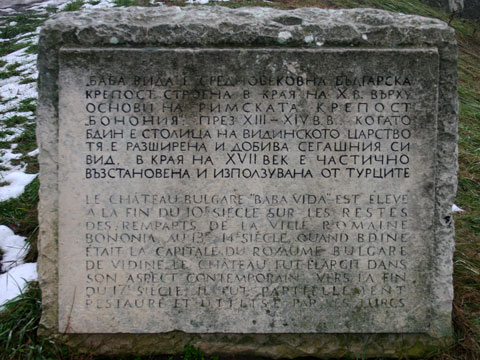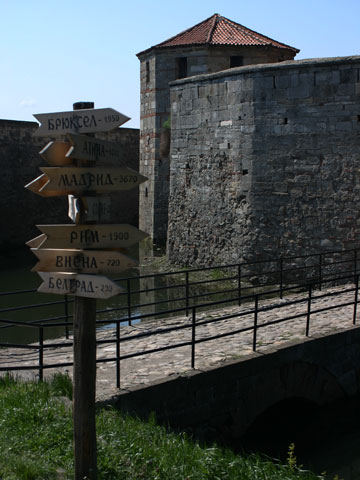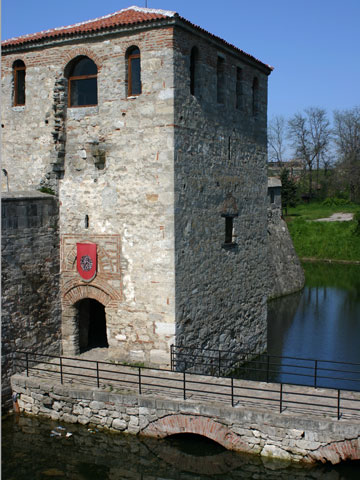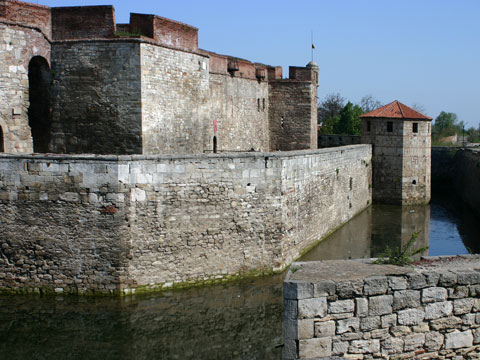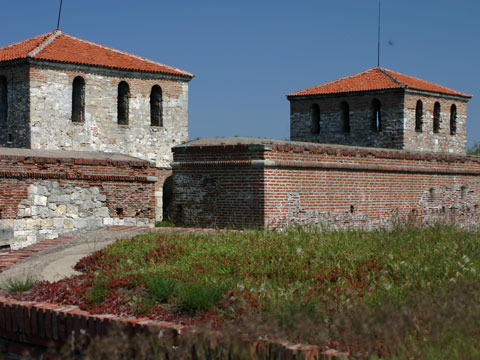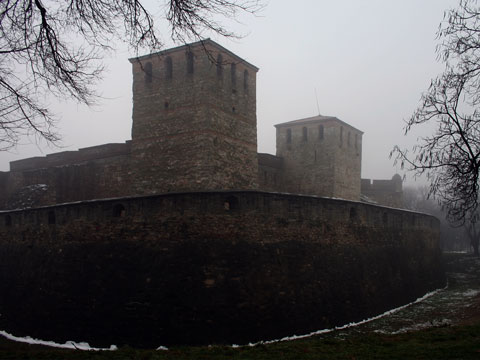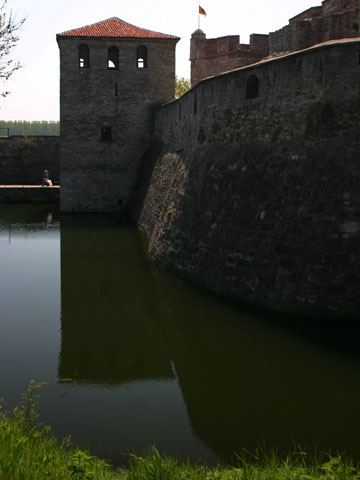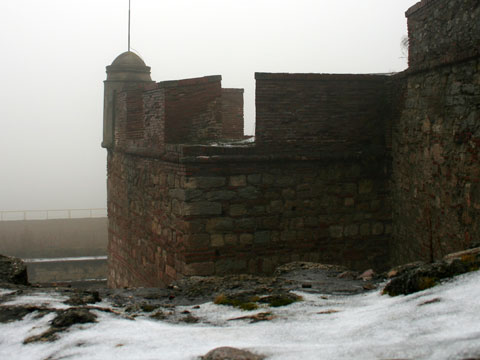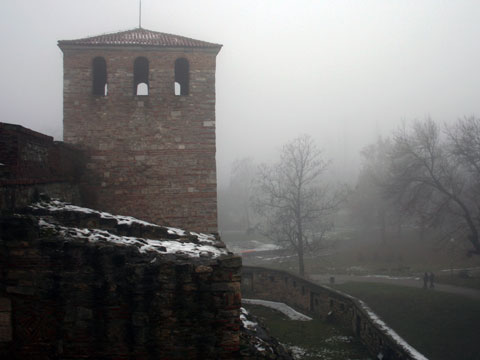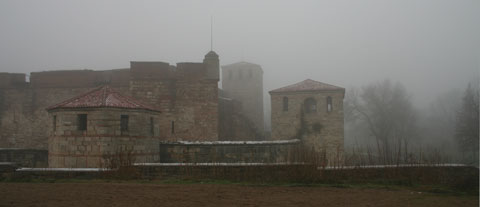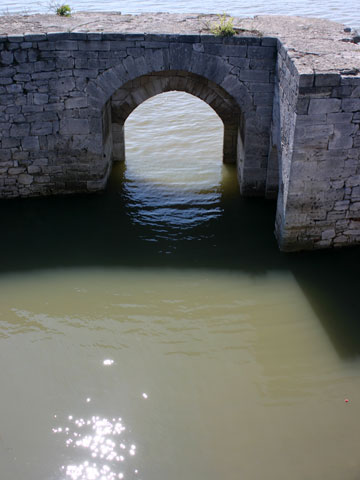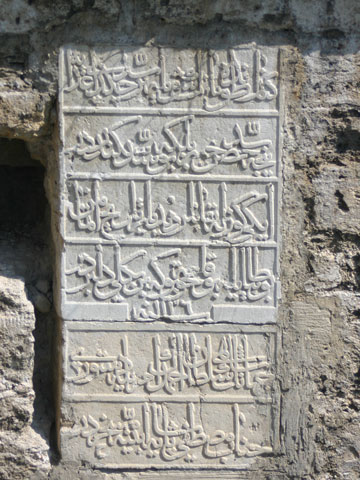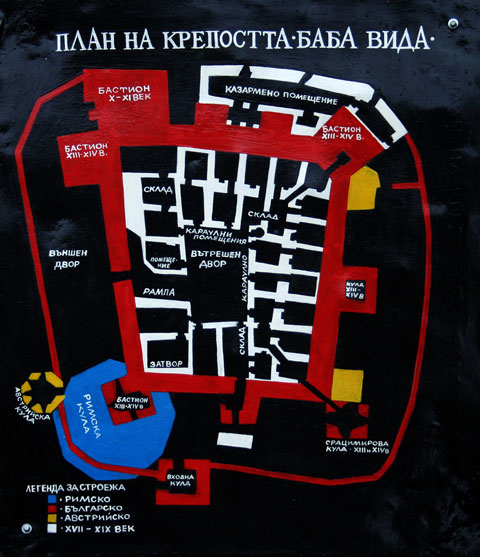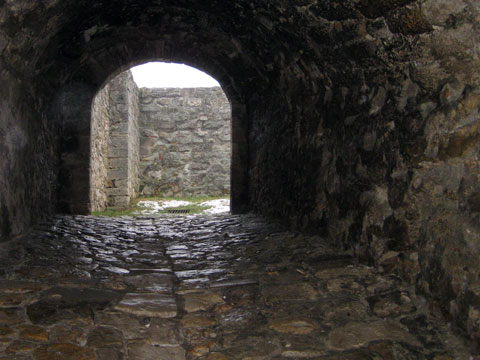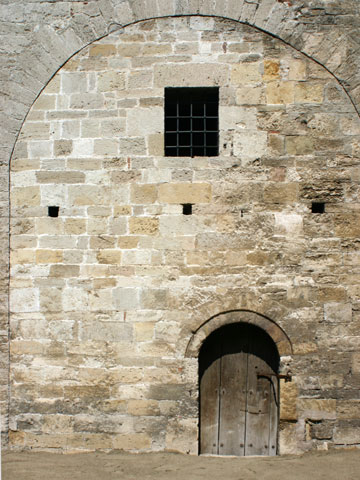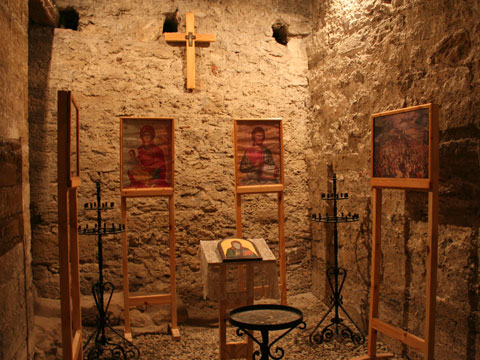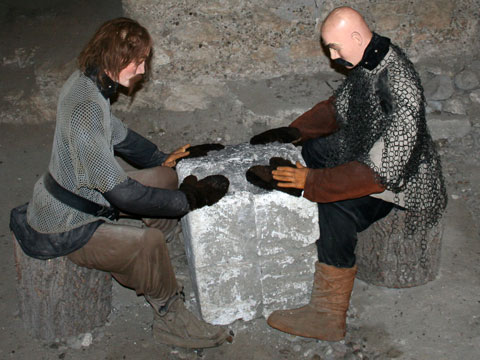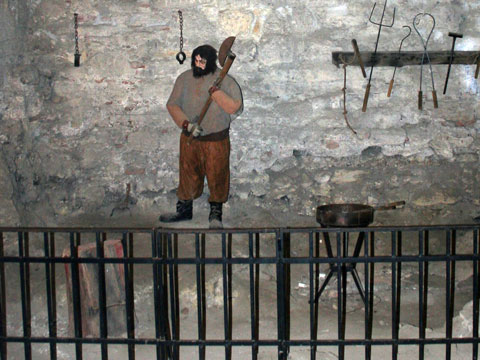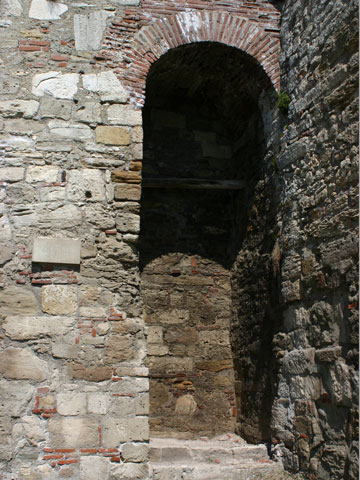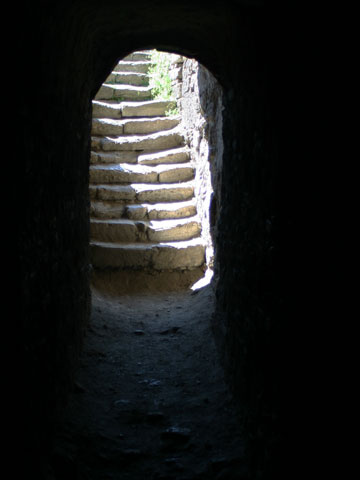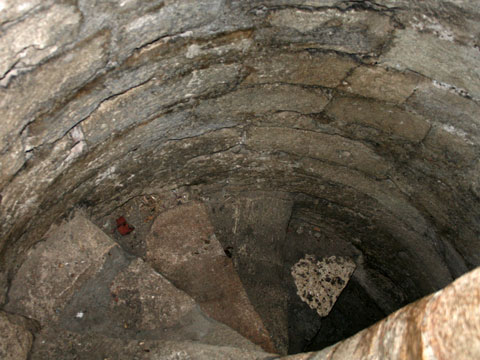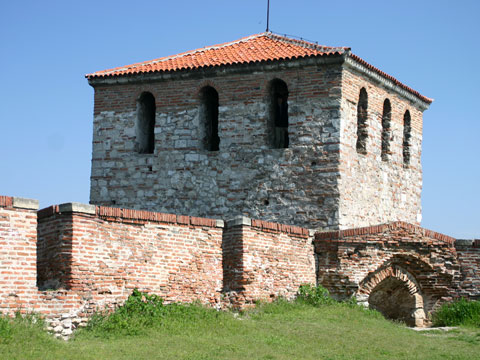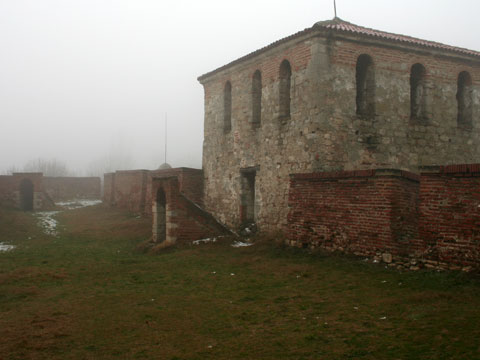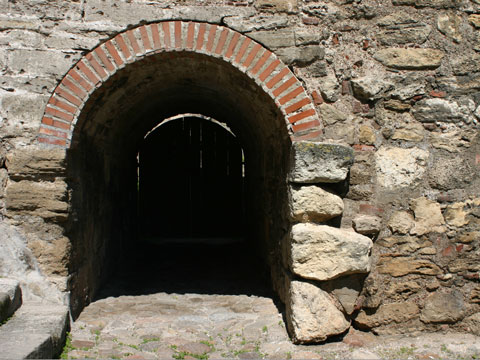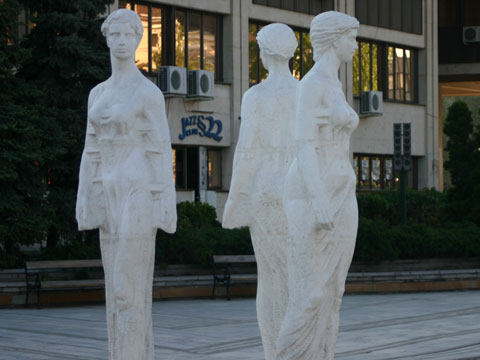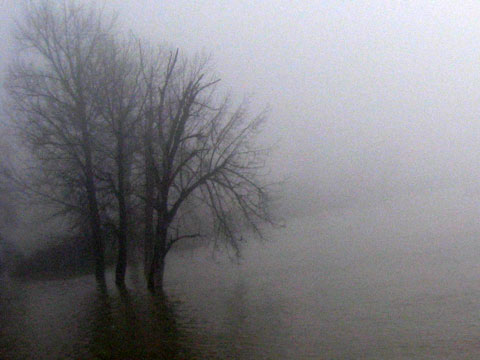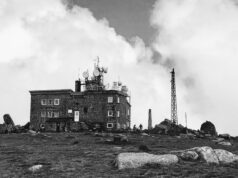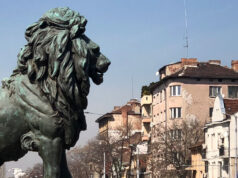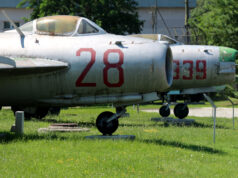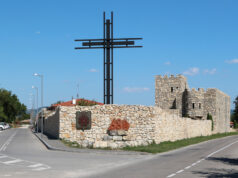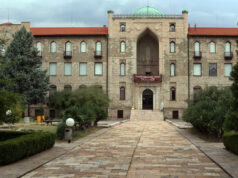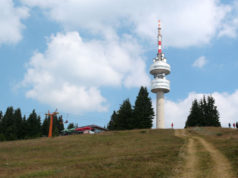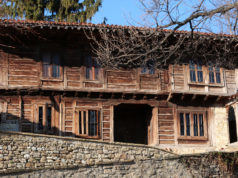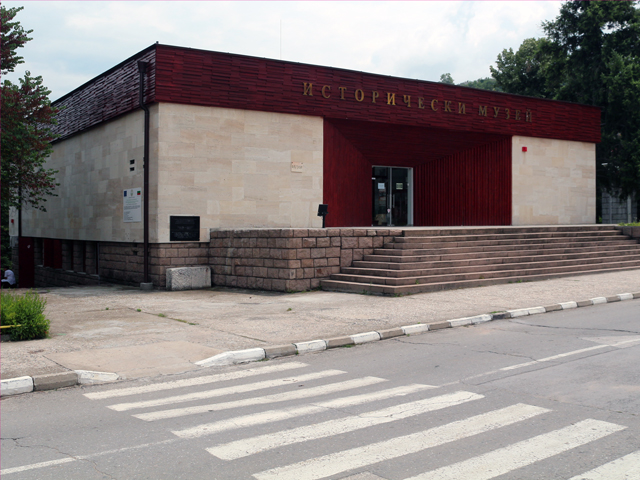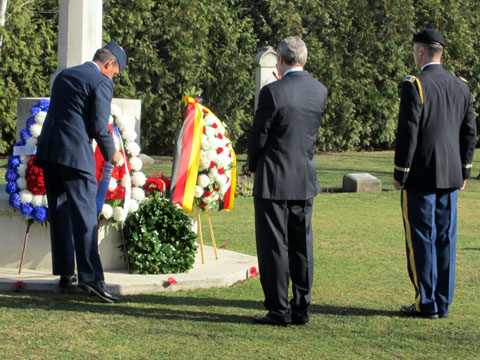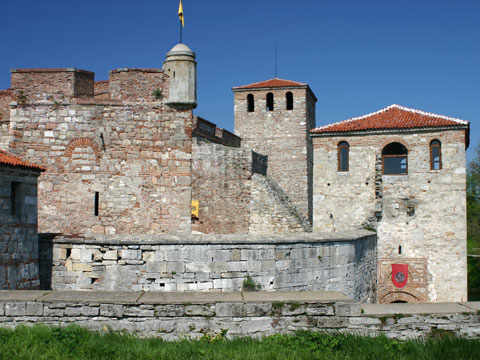 Legend has it that there once lived a Bulgarian boyar with three daughters,Vida, Kulla, and Gamza. He owned a large amount of land from the Carpathians to the Balkans and when he died his land was divided among his daughters. The centers of their territories are today’s cities Vidin and Kula in Bulgaria, and Gamzigrad in present day Serbia. The younger two sisters married quickly to bad men who wasted their father’s land, but their older sister Vida remained single all her life. She was a good leader, and had a castle built which protected her and her people from assault. When she died of old age, her grateful people named the castle after her, and so it was called “The Towers of Baba Vida,” or just “Baba Vida” (Баба Вида.)
Legend has it that there once lived a Bulgarian boyar with three daughters,Vida, Kulla, and Gamza. He owned a large amount of land from the Carpathians to the Balkans and when he died his land was divided among his daughters. The centers of their territories are today’s cities Vidin and Kula in Bulgaria, and Gamzigrad in present day Serbia. The younger two sisters married quickly to bad men who wasted their father’s land, but their older sister Vida remained single all her life. She was a good leader, and had a castle built which protected her and her people from assault. When she died of old age, her grateful people named the castle after her, and so it was called “The Towers of Baba Vida,” or just “Baba Vida” (Баба Вида.)
The castle fortress Baba Vida has long played an important role in history, and has been ruled by many famous rulers of the Bulgarian and Ottoman empires. Glad is the first recorded ruler of Budin (an old name for Vidin.) He ruled in the beginning of the 10th century CE over a great amount of territory and was called “tarkan” or “komit.” The Bulgarian Tsar Samuil, who lived in the late 10th and early 11th centuries ruled Budin before becoming king.
Yako Svetoslav was a Russian prince who came to Bulgaria for refuge during a Tartar-Mongolian invasion in the 13th century. He gained power and position and married the granddaughter of the king. He was given the title of ‘Despot’ which was a position second only to the Tsar, he was also in the running to become king before he was murdered by the queen. Ivan Stratsimir, second son of Ivan Alexander, made Vidin his capital from 1356-1396. Much of his reign was spent battling for control over the Vidin region, and he was eventually forced to give way to the Ottoman invaders.
During the Turkish yoke, Osman Pazvantoglu was the Ottoman governor of Vidin from 1794-1807. He is famous for rebelling against the Sultan Selim III. By 1798 he ruled a large territory between the Danube river and the Balkan mountains, stretching from Belgrade to Varna. He made peace with the Sultan and was made Pasha over his lands.
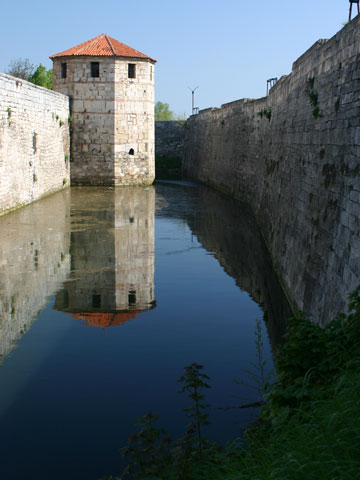 Baba Vida is located in the North East part of Vidin, a town on the North West border of Bulgaria, which has often been a military-administration center for North-Western Bulgaria, as well as territories in present-day Serbia and Romania. Baba Vida was built on the bank of the Danube River, which today forms the border between Bulgaria and Romania. The river served as the source for the fortress’s moat.
Baba Vida is located in the North East part of Vidin, a town on the North West border of Bulgaria, which has often been a military-administration center for North-Western Bulgaria, as well as territories in present-day Serbia and Romania. Baba Vida was built on the bank of the Danube River, which today forms the border between Bulgaria and Romania. The river served as the source for the fortress’s moat.
The earliest known fortified construction on the site was the Roman fortress Bononia. The best well preserved foundation was the North East corner tower, which was used incorporated in the later construction of Baba Vida and is still visible today. Dating back more than 2000 years, Baba Vida is one of the best preserved defense works in Bulgaria. Baba Vida has gone through three major periods of construction: Ancient (1st to 4th centuries), Medieval, from the end of the first, through the second Bulgarian kingdoms (10th to 14th centuries), and Ottoman, during their rule over Bulgaria (15th to 19th centuries) These major construction periods as well as the 20th century restoration and archeological explorations of the fortress have made Baba Vida what it is today. Small displays have been set up with finds from within the fortress, and a bridge has been constructed to replace the wooden drawbridge that once protected the main gate.
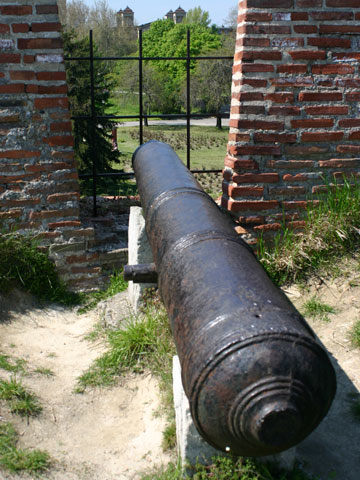 Baba Vida is a lovely place to visit, and there is a lot to explore in the fascinating fortress. There are many staircases and several levels on which to walk about. Some of the stairs are rather difficult to climb, but the view from the top of the tower is worth it. You can see the old canons, and peer off the ledges from which hot oil would have been poured to defend the keep. On a clear day, the commanding view along the bend of the Danube reveals the advantageous position of Baba Vida for defense of the waterway and surrounding area.
Baba Vida is a lovely place to visit, and there is a lot to explore in the fascinating fortress. There are many staircases and several levels on which to walk about. Some of the stairs are rather difficult to climb, but the view from the top of the tower is worth it. You can see the old canons, and peer off the ledges from which hot oil would have been poured to defend the keep. On a clear day, the commanding view along the bend of the Danube reveals the advantageous position of Baba Vida for defense of the waterway and surrounding area.
There is also an opportunity to learn about the history of Baba Vida in the small artifacts museum, although the museum signage is only in Bulgarian. There are also displays set up in the armory and a small chapel. A modern summer theater, set up near the Austrian tower built during their brief hold of over Vidin, features events with participants from all over Bulgaria in the summer season.
Baba Vida is a historical and architectural jewel, and not to be missed among the 100 tourist attractions of Bulgaria. There is a small building outside where you can pay for entry, as well as purchase informational booklets and postcards.
By Rebecca Punch
Baba Vida Fortress
Number 13 on the list of top 100 tourist sights
Hours of operation:
Summer
weekdays 0900 to 17:30
weekends and holidays 0830 to 1730
Winter
weekdays 1000 to 1700
weekends and holidays 0900 to 1700


